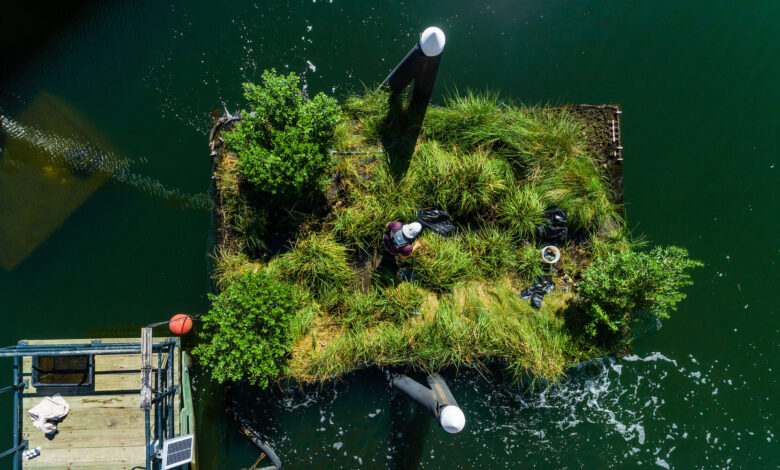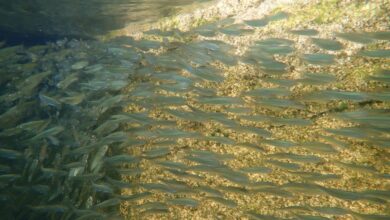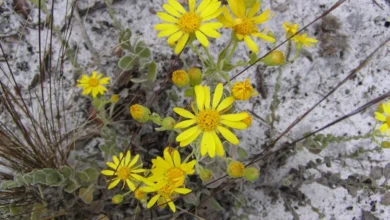
A floating wetland in Baltimore's Inner Harbor installed by the National Aquarium. Photo Credit: National Aquarium
Environment USAThis Floating Eco-Park Cleans Urban Rivers
Along a portion of the Chicago River in Illinois, United States, floating wetlands have been installed to help clean the heavily industrialized city’s water, with artificial installations filtering contaminants, locking up chemicals, and taking up excess agricultural nutrients.
“They function very similarly to a natural wetland: they have the same processes, plants, and microorganisms, bacteria, and algae, [which] naturally break down toxins,” explains Richard Grosshans, a research scientist with the International Institute for Sustainable Development. “They take up nutrients and provide habitat. It’s kind of common sense to those of us who work with these types of systems.”
Five small artificial islands – totaling 280 square kilometers – have been installed in Bubbly Creek as part of the extension of the floating wetland project called The Wild Mile Chicago. Indeed, in 2018, a stretch of the Chicago River’s North Branch was the first portion to have artificial floating wetlands installed. Each floating installation is made of polyethylene and metal frames draped in matting. Anchored to the river bottom so it would stay in place to allow roots to grow, the wetland has native grasses and plants like sedges, swamp milkweed, and queen of the prairie. This “riverponic” system – one that requires no soil or other substrate for support – is designed to help reduce manmade contaminants that persist in the environment. In the United States, artificial floating wetlands are being put to the test in Boston, Baltimore, and Chicago and they are multiplying in the United Kingdom, Australia, and Brazil.



